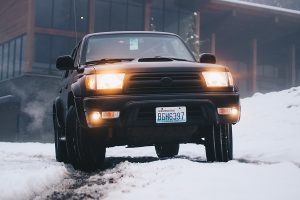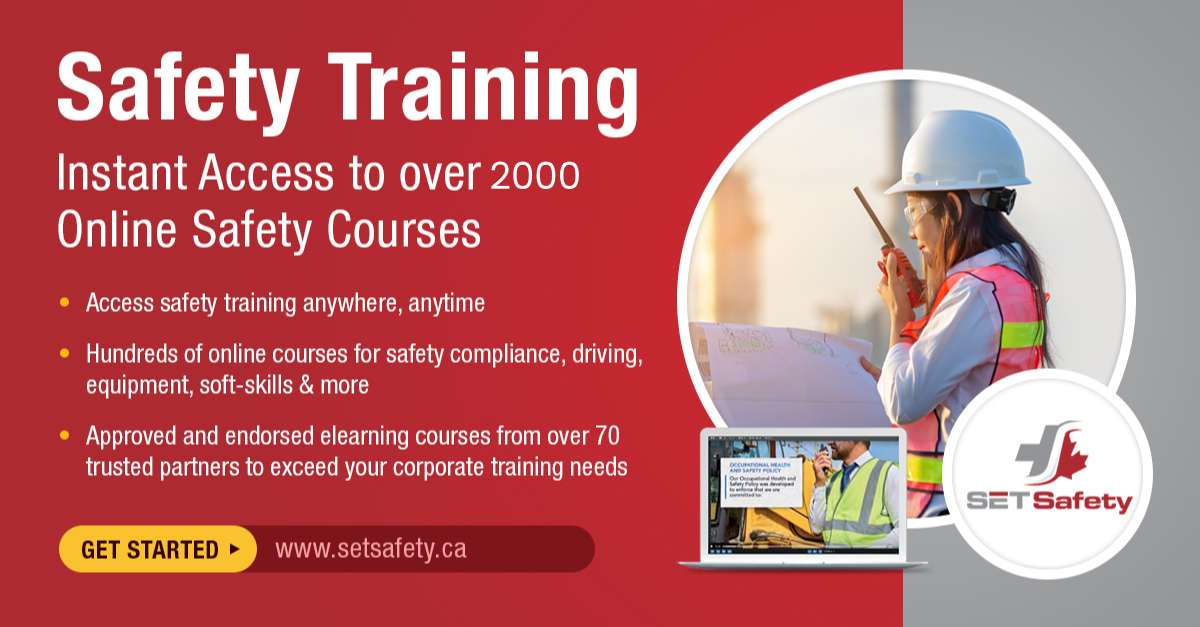4 Winter Safety Tips – Be Prepared to Stay Safe and Healthy in Winter
 Winter is already here in much of North America. This brings new safety-related challenges with driving, environmental exposure, PPE options, equipment and more. Be it our workplace or home, safety should be of the utmost importance.
Winter is already here in much of North America. This brings new safety-related challenges with driving, environmental exposure, PPE options, equipment and more. Be it our workplace or home, safety should be of the utmost importance.
We have compiled a variety of general information that may be helpful to integrate into your safety discussions and/or tailgate meetings during the winter season.
Should you be looking for free safety videos on these and other topics, this is a great channel online. SET Safety and/ or the author is not responsible for the accuracy or validity of this information. SET Safety and/or the author does not accept liability for the reliability, accuracy, medical-validity or completeness of the information presented. This article does not substitute legal, medical, jurisdictional or professional advice. The reader bears all responsibility to seek professional guidance or medical advice on any information noted in this blog or related to the content of this blog.
WALKING ON AN ICY SURFACE:
Walking on an icy surface is not easy. Slips, trips and falls are one of the leading calls for 911 across North America.
Here are some tips for safe walking.
- Wear gloves to keep your hands out of your pockets to maintain better balance
- Use a backpack to carry items instead of your hands
- Stay on designated pathways and hold onto handrails if available
- Point your feet slightly outward and extend your arms to your side to keep your balance
- Walk like a penguin by taking short steps or shuffling for stability
- Use special care while entering or exiting your vehicle
- Most importantly don’t rush on anything. Online training courses may be helpful for this topic.
DRIVING ON ICY SURFACES:
Driving in winter is challenging and you will have to change the way you drive. Snow, sleet, ice and water can lead to hazardous road conditions.
Prepare your Vehicles for the winter:
- Check your battery periodically as battery power may drop as temperature drops
- Have winter tires with more flexible and deeper treads.
- Maintain your vehicles braking system
- Check tire pressure as tire pressure can drop as temperature drops
- Check & maintain your wiper blades
- Use appropriate wiper fluids
- Check the cooling and heating system
- Keep your fuel tank at-least half full to avoid freezing
- Have a emergency supply kit ready. Consider candles, blankets, snacks and hand-warming products
Before your trip begins, check for the following:
- Clean your side view mirrors, wind shields and external camera lenses to have a clear view of the outside.
- Check your tires and tire pressure
- Remove dirt, ice and snow from sensors to allow assistive-driving features
- Warm up your car before starting
- Don’t leave your car running in your garage to avoid carbon monoxide poisoning, even if your garage door is open
- Look out for weather reports for bad weather and share your travel plans with some one
- Having a cell phone is ideal and/or satellite phone for remote areas
- Perform a walk-around inspection as-per your company-protocols
Some general tips for safe driving courtesy AAA:
- Avoid using cruise control in winter conditions
- Steer in the direction of a skid, so when your wheels regain traction, you don’t have to over-correct to stay in your lane
- Accelerate and decelerate slowly
- Increase following distance to 8 to 10 seconds or more
- If possible, don’t stop when going uphill
If the visibility is poor, pull off the road to a safe place and wait for the conditions to improve. Avoid emergency braking unless it is an absolute emergency and the visibility is limited to other vehicles on road too.
Many online training courses are available to help train yourself or your employees about Winter driving safety.
COLD-RELATED INJURIES/ ILLNESSES:
During the cold winter season, common cold-related injuries may include:
- Chilblains
- Immersion (trench) foot
- Frost nip
- Frostbite
- Hypothermia
- Dehydration.
External risk factors for cold injuries can include temperature, wind, immersion, altitude, work load and duration of exposure. Individual risk factors can include fitness, fatigue, general health condition, prior history of cold injuries, medications, alcohol, nutrition and nicotine.
Cold injuries can help to be prevented by following safety tips such as:
- Keep your body warm by using appropriate PPE
- General movement to keep the body warm but NOT to sweat
- Avoid alcohol
- Avoid tobacco products
- Drink water or other fluids to prevent dehydration
- Drink warm beverages
- Eat properly
- Limit the time outside on extremely cold conditions
- Periodically move into a warm area
- Wear proper clothing (several layers of loose clothing that is NOT cotton-based)
- Protect your feet – carry an extra pair of socks and immediately change damp socks, use foot powder to absorb moisture, use water resistant boots
- Protect your hands wearing insulated gloves, keep gloves clean and dry
- Avoid contact with snow, ice or liquids exposed to cold
- Protect your head, face and nose and lastly, protect each other, watch for signs of frost bite or cold weather injuries in your co-workers or family and immediate professional medical help.It is important to follow company rules and adhere to your local first aid guidelines.
Carbon monoxide poisoning
During colder months, vehicles are commonly idling and heating systems for buildings are working hard. This poses a risk with carbon monoxide exposure.
Carbon monoxide poisoning occurs when carbon monoxide builds up in your bloodstream. When too much carbon monoxide is in the air, your body replaces the oxygen in your red blood cells with carbon monoxide. This can lead to serious tissue damage, or even death.
If you think you or someone you’re with may have carbon monoxide poisoning, remove them to fresh air and seek emergency medical care. Check your smoke and carbon monoxide detector batteries regularly and replace them at least once a year. Have your heating system regularly serviced and make sure it works properly and ventilated out properly.
Vehicles idling or warming up should be outside and away from any buildings, people, animals or fresh-air intakes. Never run a vehicle in an enclosed space.
Additional awareness training on this topic may be helpful.
Naturally this content is not an extensive list of winter hazards & risks and how to mitigate them. It’s critical to adhere to local first aid guidelines, company policies and local Health & Safety legislation.
As an employer, having strong safety policies and a positive safety-culture extends to all seasons. Employers should initiate and reinforce safety protocols as well as provide proper training for employees.
Winter Safety Awareness
Stay safe and stay warm!
Content Courtesy of: https://www.mayoclinic.org/diseases-conditions/carbon-monoxide/symptoms-causes/syc-20370642#
https://exchange.aaa.com/safety/driving-advice/wet-weather-driving-tips/#.

